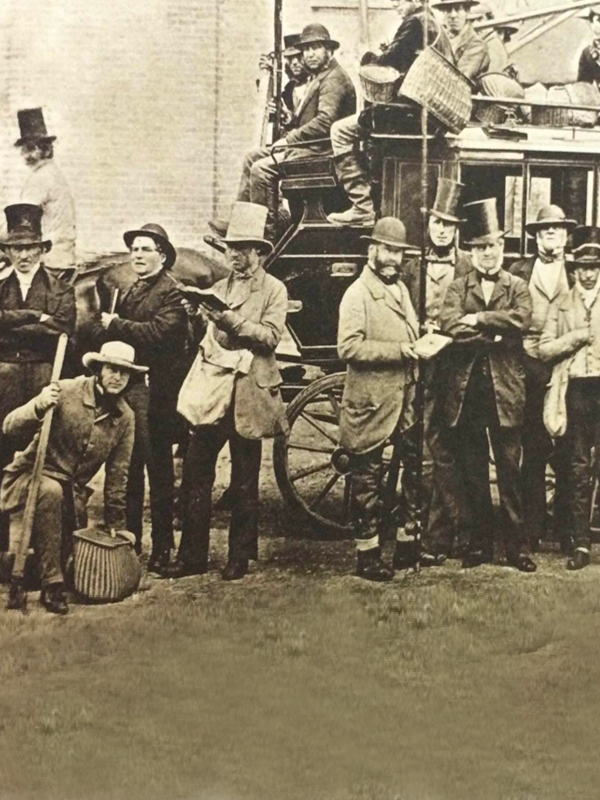
Patagonia
Patagonia

For exactly half a century, lovers of nature sports, climbers, skiers, surfers and fly fishermen have known the name of Patagonia, which, in addition to making the best, most beautiful and most resistant outdoor clothing and equipment, was the first company to donate part of its profits to help save rivers, fish and the environment in general.

Yvon Chouinard, admires the view from the top of the rocky outcrop he just reached.
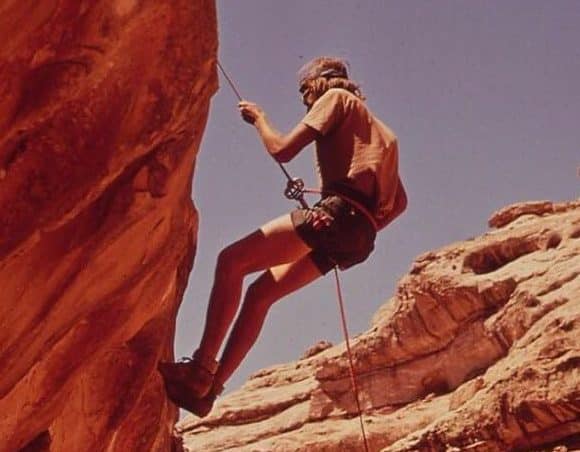
Patagonia has created a whole range of products and clothing dedicated to climbing.
Patagonia is a California-based manufacturer of technical clothing and equipment (backpacks, travel bags, waders, shoes, etc…) created in 1972 by Yvon Chouinard, an American passionate about climbing, surfing and fly fishing. Judging in 1957 that the pitons and carabiners he used for mountaineering were not strong enough, he decided to make his own reusable steel equipment in a small workshop in the backyard of his parents’ house in Burbank, near Los Angeles. He made a living selling the equipment he made from the trunk of his car.
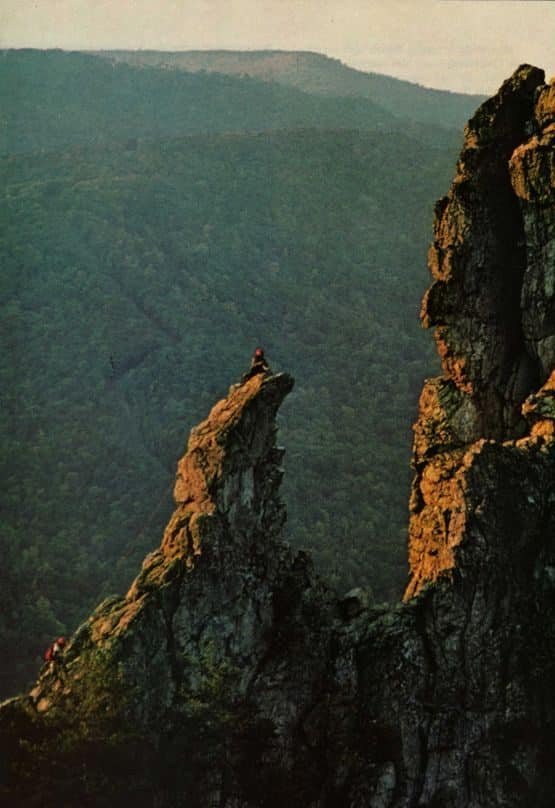
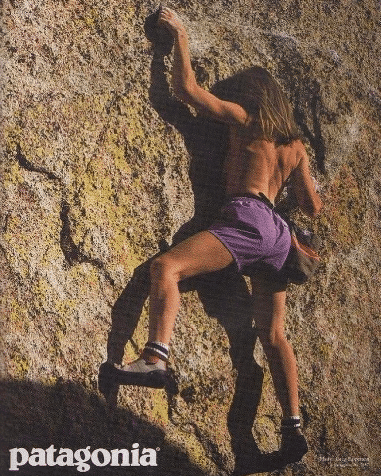
The famous Patagonia climbing shorts, ultra-resistant and not impeding movement.
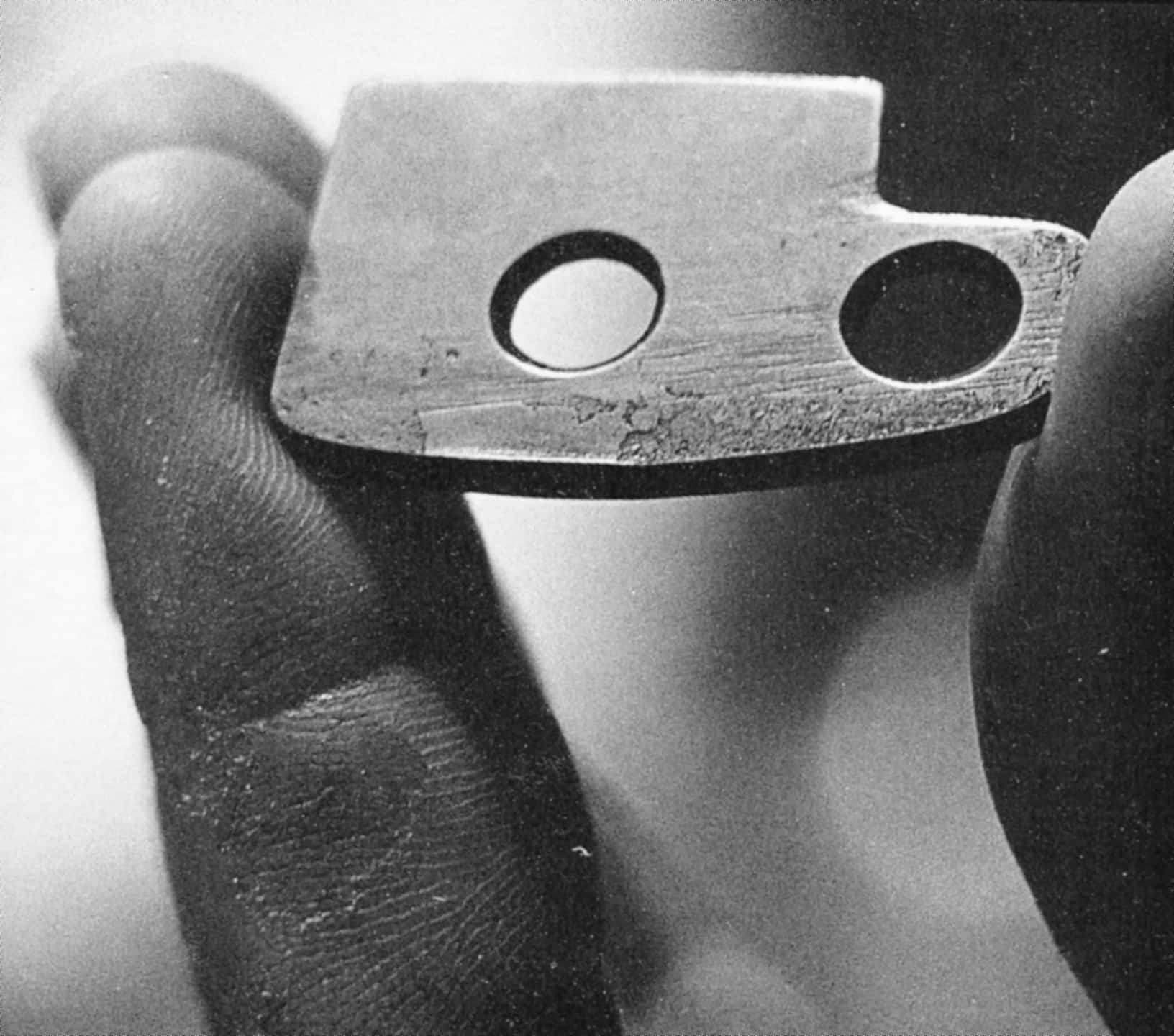
One of the first pitons forged by Yvon Chouinard, reusable, therefore not "polluting" the walls.
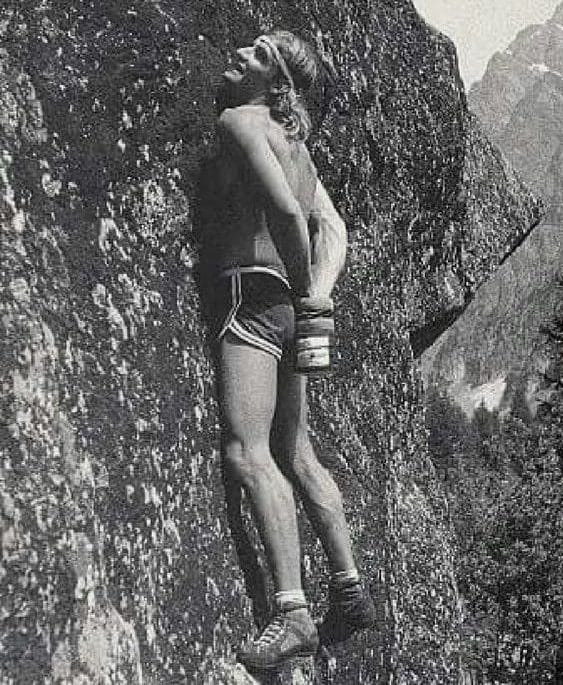
Bare-knuckle climbing has become a fashionable "extreme" sport in the United States, as in Europe.
In 1965, he joined forces with Tom Frost, a climber and aeronautical engineer. The handcrafted production then becomes industrial. He opened his first store, Great Pacific Iron Works, in the seaside town of Ventura, California. In the 1970s, Chouinard Equipment became the leading supplier of climbing equipment in the United States. In 1972, the company decided to replace rock-damaging pitons in its catalog with aluminum belays, inventing “clean climbing. That same year, the company introduced solid outdoor items and clothing (polyurethane-coated rain jackets, bivouac bags made in Scotland, boiled wool gloves and mittens from Austria, reversible hats) and in 1973 changed its name to Patagonia.
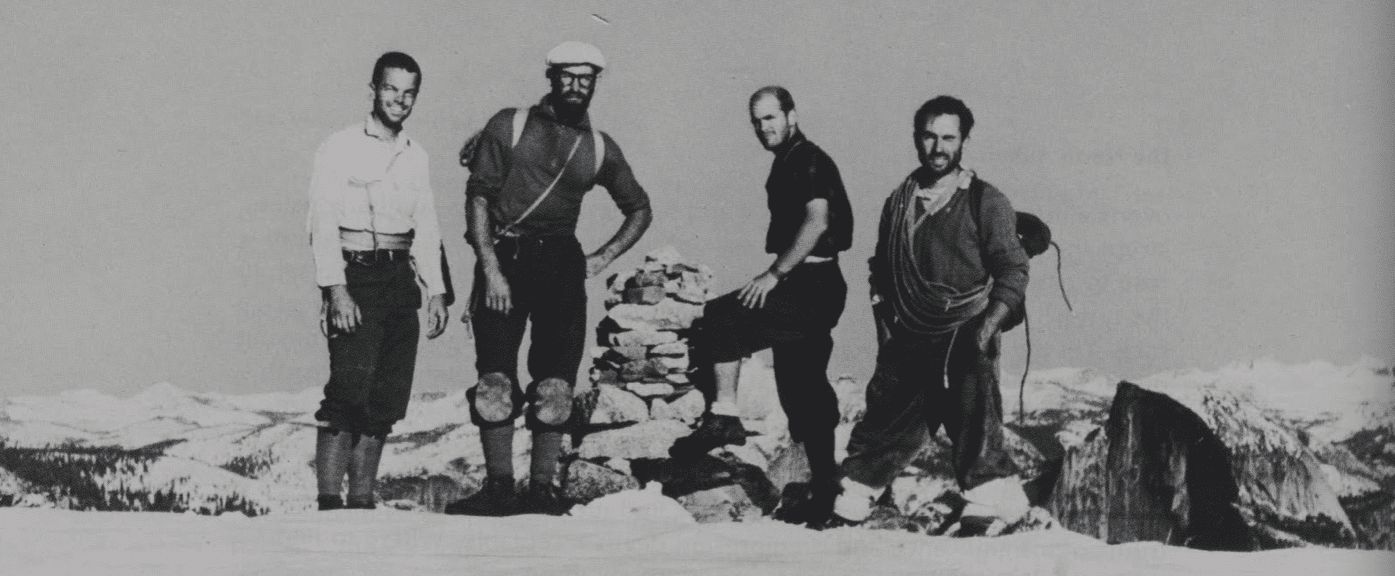
Tom Frost, Royal Robbins, Chuck Pratt and Yvon Chouinard at the summit of El Capitan after the first ascent of North America Wall, October 31, 1964.
Patagonia invented the polypropylene fleece, a real revolution.
In 1975, the company used upholstery fabric to create synthetic fleece jackets and then created polypropylene underwear in 1980. It was a real commercial success, with all those who practice camping and nature sports and the company takes advantage of it to diversify its manufacturing, by launching in particular in the equipment intended for what interests us more particularly: fly fishing, vests to store fly boxes and accessories, rain jackets, waders and wading shoes, which are still the best, and I speak about it as a convinced user for more than forty years…
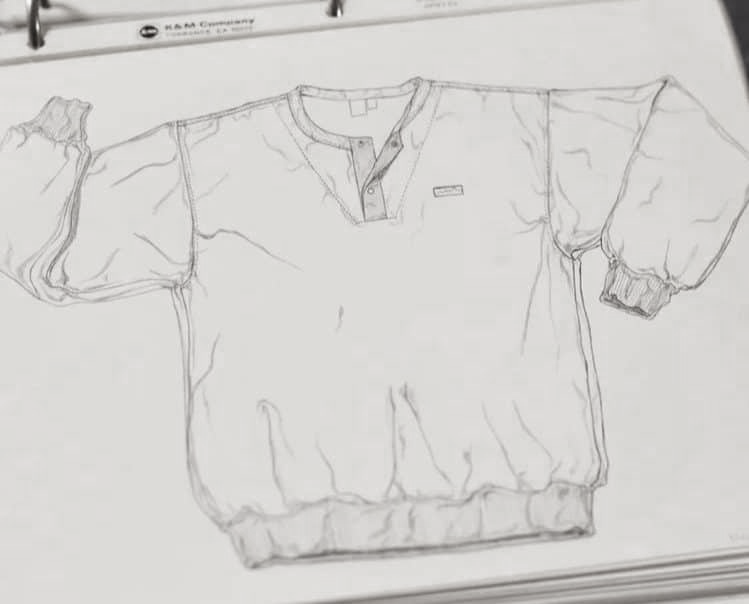
One of the first garment designs made from Capilene N.D., a material made by Patagonia from recycled plastic bottles.

Guaranteed for life, and even when worn out, Patagonia replaces all of the brand's clothing for free.
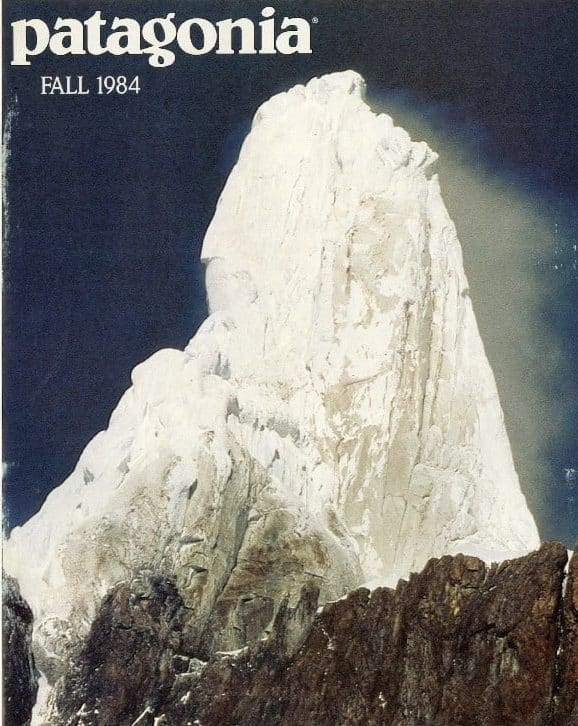
Old Patagonia catalogs are highly sought after by American collectors.
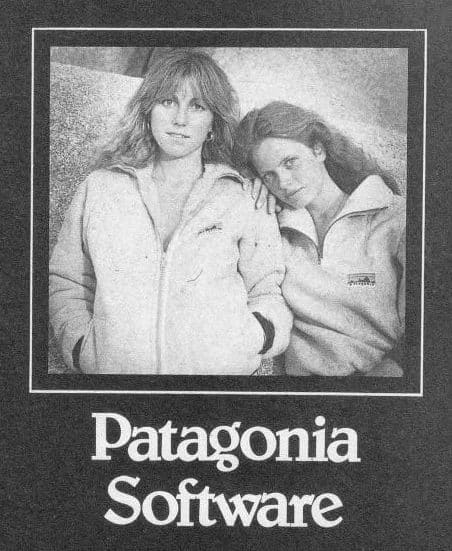
The Patagonia line is not only very solid but also very chic.
In 1986, Patagonia commits to donate 10% of its profits each year, which is subsequently transformed into 1% of its sales or 10% of its profits before taxes. In 1987, Patagonia Europe was created. In 1988, Patagonia launched its first national environmental campaign by supporting an alternative de-urbanization project in Yosemite Valley in the Sierra Nevada, California. In 1992, the company developed a program to assess the environmental impact of products. It is in this perspective that it abandons traditional cotton for 100% organic cotton.
Patagonia is sometimes nicknamed “Patagucci” in reference to Gucci and its positioning on products that are both beautiful, “classy” and premium. In 2011, far from sinking into greenwashing, Patagonia wants to make people think about hyper-consumption, by repairing and restoring free of charge the brand’s used clothing, including waders.
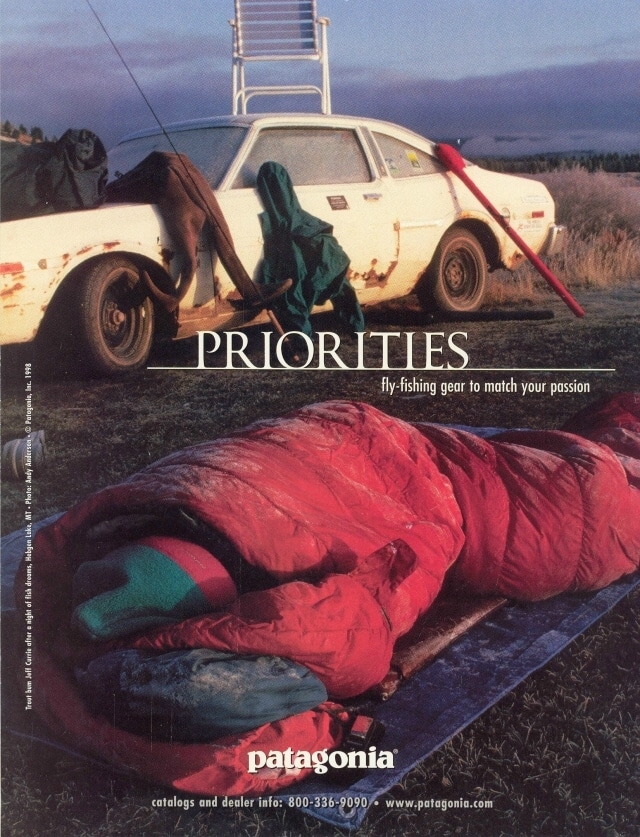
As Yvon Chouinard is a passionate fly fisherman, Patagonia has created the best equipment (waders, fishing vests, jackets, bags...) dedicated to "Fly Fishing".
In 2022, at the age of 84, Yvon Chouinard, the founder of the brand, in agreement with his wife and two children, decides to give 100% of the shares of the company to a trust in charge of respecting its values and to an environmental association that will recover all its profits. He took the opportunity to write a true will for the benefit of the environment, published by all the major American and European business and consumer magazines. Here is this testament:
“The Earth is our sole shareholder.
If our goal is a planet where life thrives – and not to run a business – each of us will have to take responsibility. We have taken ours. I never wanted to be an entrepreneur. I started out as a craftsman making climbing gear for my friends and myself before I got into textiles. As we realized the impact of global warming, ecological destruction, and our contribution to it, we decided to use our company, Patagonia, to transform the business world. If we could do the right thing and make enough money to pay our bills, we could influence consumers and businesses, and maybe change the system at the same time.
We started with our products, using materials with a small ecological footprint. Then we donated 1% of our sales each year. Then we became California Benefit Corporation certified, writing our values into our company charter to ensure their sustainability. Most recently, in 2018, we changed our corporate mission to “we use business to save our planet”.
Doing our best to combat the environmental crisis is not enough. We need to find a way to invest heavily in the fight against global warming while keeping our values intact.” The truth is, none of the existing options worked for us. So we created our own. “One option was to sell Patagonia and give away all of the money generated from the sale. This offered no guarantee that our values would be maintained or that our teams would remain around the world. Another option was to go public. This would have been a disaster. Once listed, even companies with the best of intentions choose short-term gain over long-term responsibility and growth.
The truth is, none of the existing options were right for us. So we created our own.
Rather than go public, we decided to follow our corporate mission to the letter. Instead of extracting natural materials to enrich our investors, we will use the wealth created by Patagonia to protect the source of all that wealth.
Here’s how it works: 100% of our voting shares have been transferred to the Patagonia Purpose Trust, whose purpose is to protect our company’s values; 100% of our non-voting shares have been transferred to the Holdfast Collective, a non-profit organization whose purpose is to fight the environmental crisis and protect nature. The funds will be transferred by Patagonia: every year, the money remaining after making the investments necessary to sustain our company will be distributed as a dividend and will fund the fight against the environmental crisis.
We have been experimenting with this idea of responsible business for almost 50 years and we are far from finished. If our goal is a planet where life thrives – and not to run a business – each of us will have to take responsibility. We have taken ours.
Despite appearances, our planet’s resources are not infinite and it is clear that we are consuming more resources than the Earth can produce. But we believe in its resilience and are convinced that we can save it if we all decide to.”


